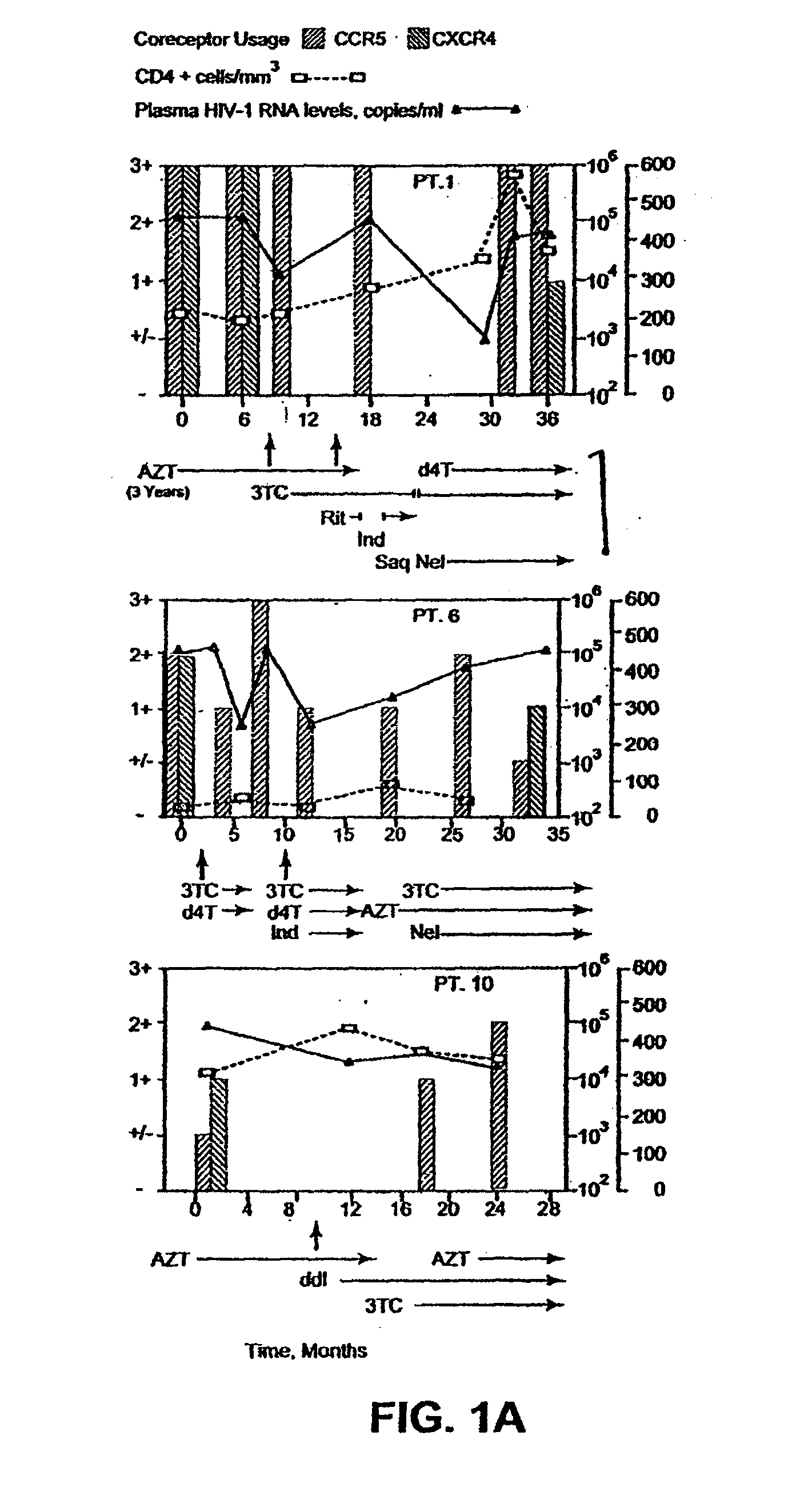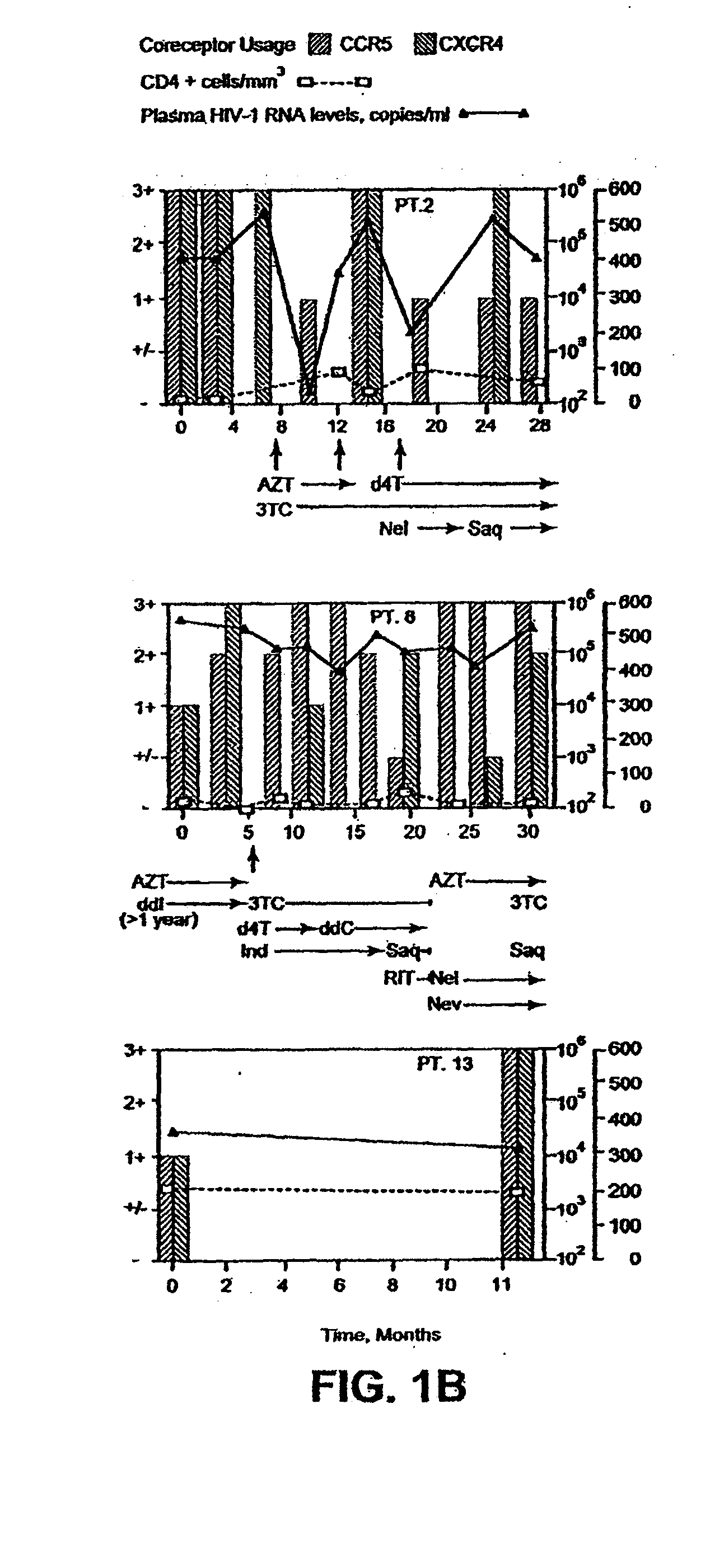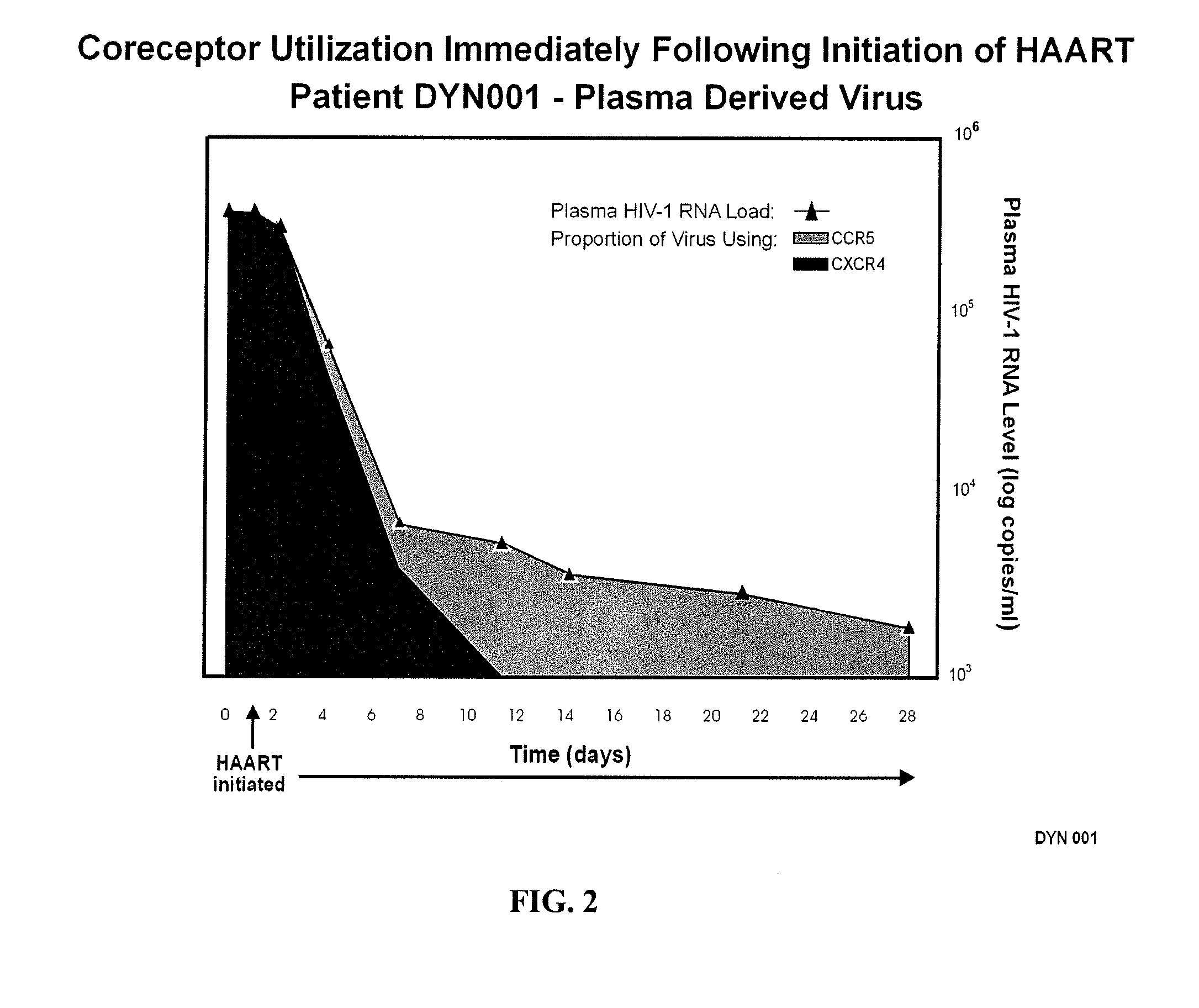Heteroduplex tracking assay
a tracking assay and heteroduplex technology, applied in the direction of microbiological testing/measurement, biochemistry apparatus and processes, etc., can solve the problems of not always sustained suppression of plasma viremia, studies that do not address the use of coreceptors in patients undergoing haart surgery, and limited success of subsequent studies
- Summary
- Abstract
- Description
- Claims
- Application Information
AI Technical Summary
Problems solved by technology
Method used
Image
Examples
example 1
Study Population
[0167]Coreceptor use was examined in twenty-two women who participated in two prospective studies of HIV-1 infection. Nineteen were enrolled in the Bronx-Manhattan site of Women's Interagency HIV Study (WIHS), a National Institutes of Health (NIH) multicenter study of the natural history of HIV-1 infection in women. Three took part in a study of HIV-1 pathogenesis performed at the Wadsworth Center of the New York State Department of Health in Albany, N.Y. Both studies included individuals with a broad spectrum of HIV-1 disease. The institutional review boards at each clinical site and the New York State Department of Health approved the investigation. Each woman provided informed consent at enrollment.
[0168]To examine the effect of combination antiretroviral therapy on HIV-1 coreceptor use, women infected with CXCR4 strains were sought. After screening twenty-two women, most with advanced HIV-1 disease, fifteen participants meeting the following criteria were studied...
example 2
Antiretroviral Therapy Preferentially Suppresses CXCR4 Strains
[0176]Fourteen women initially displayed viral populations composed of both CCR5 and CXCR4 viruses (FIG. 1) and one displayed virus that exclusively used CXCR4. CXCR4 viruses persisted at subsequent time points in patients who did not initiate new combination therapy, a finding exemplified in FIG. 1 by Patient 13, who remained untreated throughout the study, and Patients 1, 2, and 8, whose virus was sampled on multiple occasions before new therapy commenced. Viruses using CXCR4 appeared to be preferentially suppressed, however, when new regimens were initiated. Not only were CXCR4 strains eliminated by the first time point after starting new therapy in half of the treated women (FIG. 1, Patients 1, 2, 6, 8, and 10), but the proportion of these viruses seemed to be diminished in most of the others. In addition, patients who experienced a rebound in HIV-1 RNA levels and CXCR4 strains while on therapy often achieved suppress...
example 3
Dynamics of HIV-1 Coreceptor Utilization Switch
[0192]The dynamics of the shift in coreceptor utilization immediately following initiation of HAART have been characterized. Coreceptor utilization immediately following the initiation of HAART was determined by studying virus derived from the patient's PBMC's. Results show the following: 1) this patient was unusual in that her initial viral population was composed of X4 viruses only, 2) by the third day after the initiation of HAART, the viral population had switched to equal proportions of X4 and R5 using strains, and 3) by day 11, the population had entirely switched to R5 using virus (FIG. 2).
[0193]Comparison of coreceptor usage in this patient was also performed using a recombinant assay that does not require culturable primary isolates. The results of the recombinant assay were identical to the results obtained using virus derived from the patient's PBMC's. These data document a rapid, complete switch in coreceptor utilization by ...
PUM
| Property | Measurement | Unit |
|---|---|---|
| volume | aaaaa | aaaaa |
| molecular heterogeneity | aaaaa | aaaaa |
| drug resistance | aaaaa | aaaaa |
Abstract
Description
Claims
Application Information
 Login to View More
Login to View More - R&D
- Intellectual Property
- Life Sciences
- Materials
- Tech Scout
- Unparalleled Data Quality
- Higher Quality Content
- 60% Fewer Hallucinations
Browse by: Latest US Patents, China's latest patents, Technical Efficacy Thesaurus, Application Domain, Technology Topic, Popular Technical Reports.
© 2025 PatSnap. All rights reserved.Legal|Privacy policy|Modern Slavery Act Transparency Statement|Sitemap|About US| Contact US: help@patsnap.com



